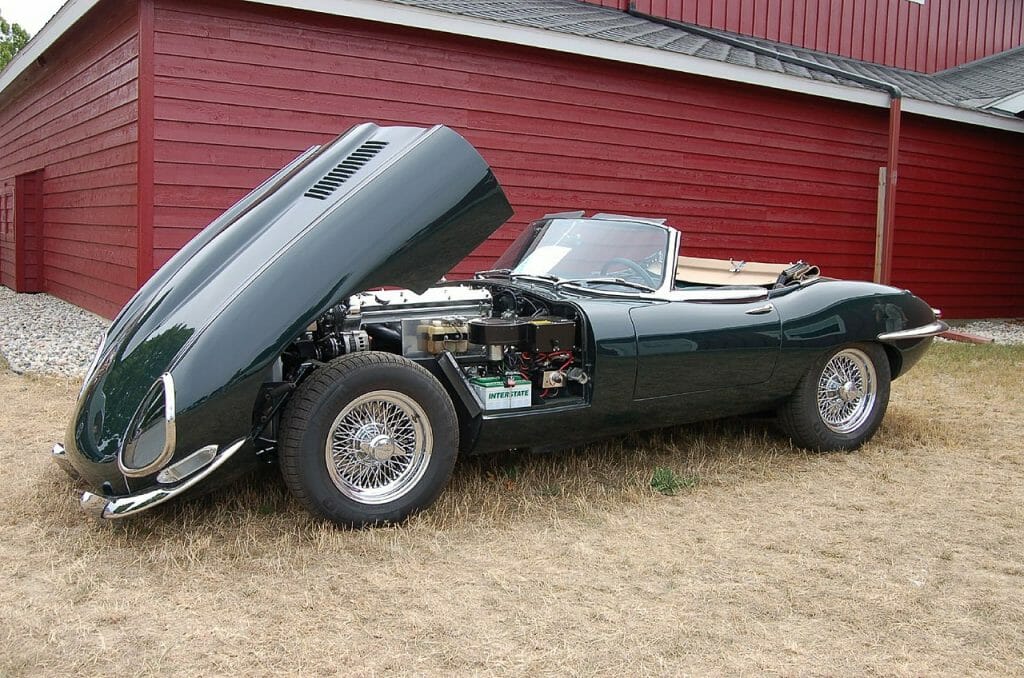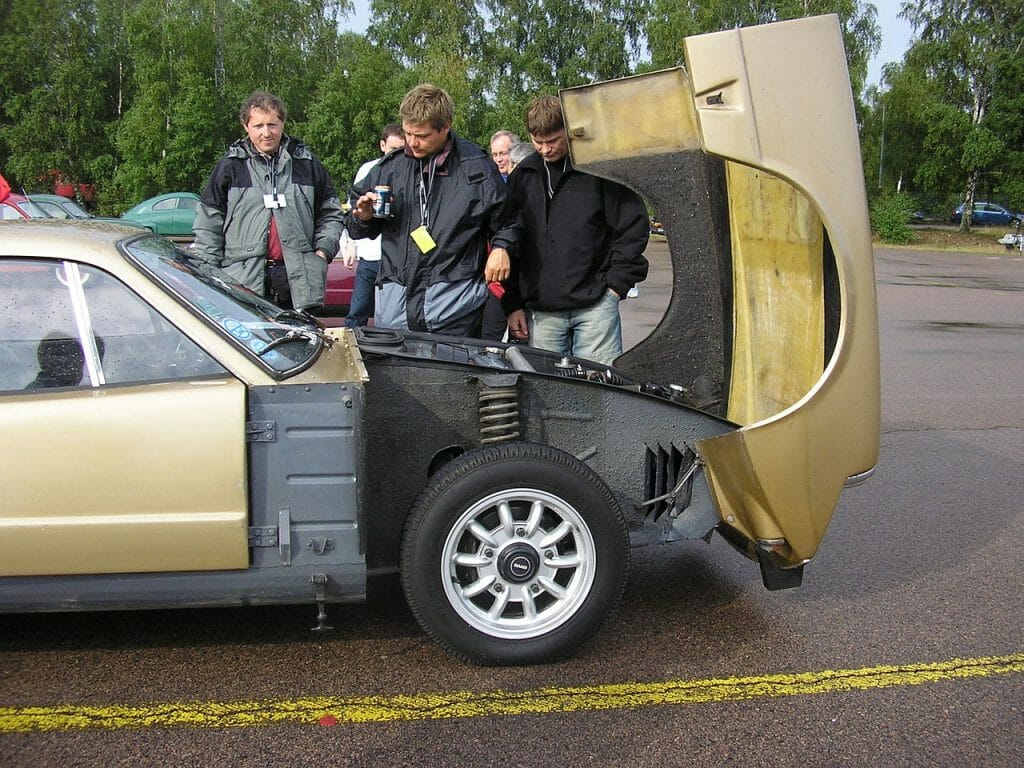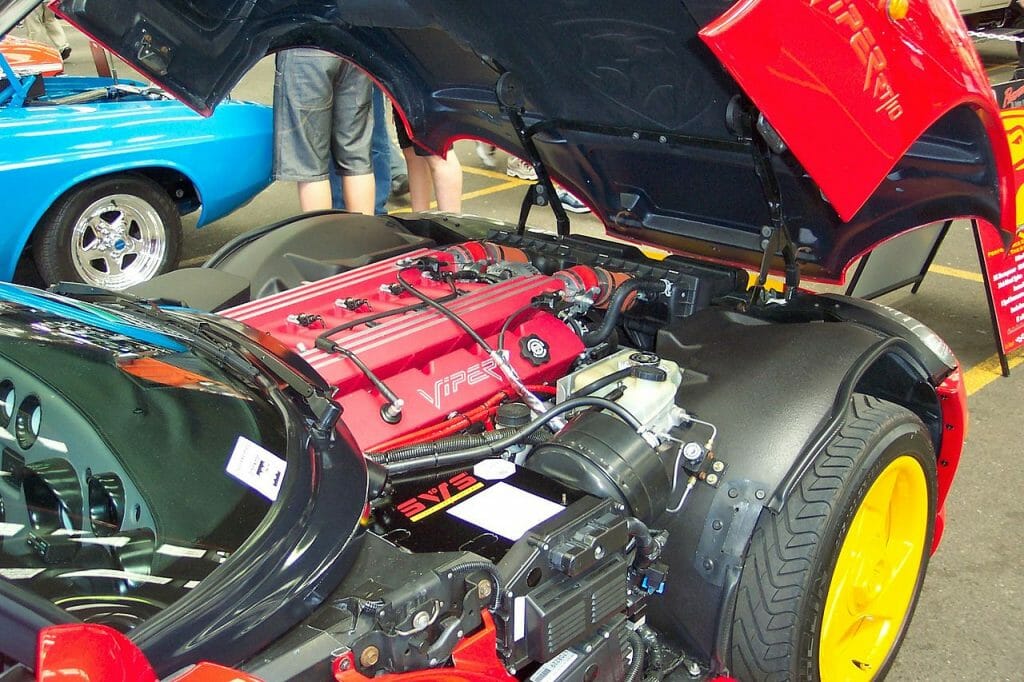Some cars have front-hinged bonnets, but most hoods open towards the rear. What are the advantages and disadvantages of these designs? Why one is more popular than the other?
To those who do not know, what Americans call a hood is called a bonnet in the UK. We will use both of these words in this article to annoy and to please everyone equally.
In the entire automotive history there were many different mechanisms to open the engine compartment. We will only talk about the two most common mechanisms – the hood that opens forward (the front-hinged bonnet):

And the much more common rear-hinged design (the hood opens rearwards):

There are advantages and disadvantages to both of these solutions. Front-hinged hoods are much rarer, but manufacturers haven’t abandoned them yet.
Why front-hinged bonnets are great?
The forward-opening bonnets may look a bit unusual and they do attract more attention. Such cars like Aston Martin DB11, BMW E30, SAAB Sonett, Chevrolet Corvette, Jaguar E-Type and F-Type, Ferrari Daytona, Lamborghini 350 GT, among many others, had front-hinged bonnets.

Front-hinged hoods are usually easier to take off. Sometimes it is just nicer to work in the engine compartment without the obstruction of the bonnet standing proudly above you.
You should notice that front-hinged hoods are more common on sports cars, and that is not a coincidence. If the latch of a rear-hinged bonnet fails for some reason at high speed, the hood is going to smash into the windshield with huge force. That’s not great in terms of safety – that’s how suicide doors got their name. The front-hinged bonnet in such a case would remain put – the air flow would only press it down, regardless of the failed locking mechanism. Of course, chances of that happening are low, but racing sometimes is a contact sport and little bumps can damage the hood latches. They can also fail because of corrosion or because of mistakes of the absent-minded mechanics.

Finally, front-hinged bonnets can be huge and have integrated fenders. What does this mean? Here’s a look at the access to the engine compartment of a Dodge Viper:

Since the fenders go up and away together with the bonnet, it is much easier to access the engine or its auxiliaries from each side. Fenders cannot be easily integrated into a rear-hinged hood, because they would catch on the car’s wheel arches. This is precisely why those versions of the Viper that have rear-opening hoods do not provide such good access to the engine compartment:

However, not all manufacturers combined the fenders and hood into a single unit. For example, BMW did not use this solution. Front-hinged bonnets were super common in BMWs, but the rear-hinged design is now just a more convenient solution.
Why rear-hinged bonnets are more common?
Of course, forward-opening hoods have their advantages, but in reality they are not very significant. Yes, these hoods are easier to remove, but how often do you have to remove the bonnet of your car? In fact, front-hinged hoods are removed more often because they get in the way more. Rear-hinged bonnets are just not as obstructive.

Maybe a front-hinged hood is safer because the air flow pushes it down, but the modern latches are reliable and very safe.
Speaking of safety, rear-hinged hoods allow access to the engine compartment from three sides, which is important not only when repairing the car, but also when extinguishing a fire.

Rear-hinged bonnets make the assembly process easier, quicker and cheaper. Furthermore, because of the safety structure of the car, there is more meat to mount the hinges there between the engine and passenger compartments. If a crash does happen, a rear-hinged bonnet is less likely to jam stuck, because the hinge side is less likely to buckle.
All in all, the biggest advantage of the front-hinged hood opening mechanism is its safety at high speed. Since most cars do not travel at high speed, a rear-hinged bonnet is just more convenient for both manufacturer and the owner who chooses to maintain his car.




